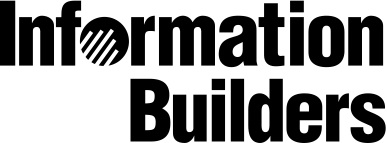This is an excerpt from the recent Customer Service Playbook for Government. In the guide, we detail six plays to help you transform the way your agency serves its citizen users.
We all have an idea of what the citizen user wants. After all, we are citizen users. But once you’ve imagined a new customer service that meets users’ needs, how can you be sure it really will stand the test of the real world?
According to Melissa Treier, Vice President of Product Sales for Information Builders, a business intelligence, integration and data integrity software provider, that’s the true test of a citizen application. “Will it drive adoption and connection with your audience? At the end of the day, if you don’t have adoption and if you don’t have connection to what you’re putting out there, then the effort is all for naught,” she said in a recent interview.
To achieve customer service goals in real environments, Treier said agencies should develop applications that fit the “three Fs.” From the development to deployment, applications should be:
Flexible. “Many organizations look at sharing information outside their firewall or to a larger community and they become overwhelmed. They think the only option is just to provide a static environment or experience,” said Treier. “But that’s going to [negatively] impact your adoption and the value associated with that application.”
Instead, applications should be responsive to the needs of individual users. That requires adaptive, multi-platform technology. “What that means from an IT perspective is that you don’t have to create multiple versions of the single application in order for it to be deployed on multiple devices,” Treier explained.
Familiar. Citizens must also be to relate your service to other interactions in their day to day. “It can’t be very distant from what [citizens are] used to in their daily lives, because then they’ll have a harder time connecting with it,” said Treier. Again, technology is a key consideration because you’ll want to reach people on devices and platforms that they already use.
In the Flow. Make sure your service can integrate into the daily routines of your users, both on and offline. “Ask yourself, ‘How do citizens typically like to receive and interact with information?’” Treier said. “Should you make it available to them via an online experience, or should you add a push technology that would allow them to pick it up on their phone?” Incorporate user habits into your design.
To engrain these three tenets into your customer service project, Treier said organizations must take an iterative development approach. “One of the most common mistakes we run into at organizations is just overcomplicating the first scenario – trying to create the ‘end all, be all’ with that first rollout,” she said.
But that design technique often fails. “It complicates the project,” Treier continued. “It requires a lot more buy-in upfront. It also just slows down the time to that first deliverable.” What’s more, that final deliverable may not actually meet citizen needs if it hasn’t been tested through prototypes.
“We’re more of the opinion that you should just get something out there. It doesn’t have to be the 360-degree, full product but it has to be something that provides some value. Start small and build on that success,” Treier said.
Additionally, Treier recommended making sure that the user and business needs of a project are fully integrated throughout that iterative development process. “Don’t let the technology drive the ultimate business value,” she said. “A key part of success is to always have the customer service team and IT working together to improve the process, to improve the trust around the organization, and get something stood up. A downfall is when we see IT take a lead with no connection to the user, and ultimately deploy something that’s not adopted.”
This IT-customer service team partnership can also create applications that are more appealing to the end user. “Most of the applications that are deployed to citizens need to combine data from more than one siloed data structure,” explained Treier. “And the data can be inconsistent in those silos. An organization must have a way to ensure the information they share is accurate, complete and consistent.”
A collaborative, iterative approach to customer service design can help organizations create flexible, familiar, and in the flow applications that engage users.
Information Builders can help achieve those goals. “Providing the technology platform and environment that really does enable an iterative approach – a fast time to delivery – and an application that citizens will actually use is our main goal,” concluded Treier.

To find out more ways to foster better customer service at your agency, be sure to check out The Customer Service Playbook for Government.





Leave a Reply
You must be logged in to post a comment.